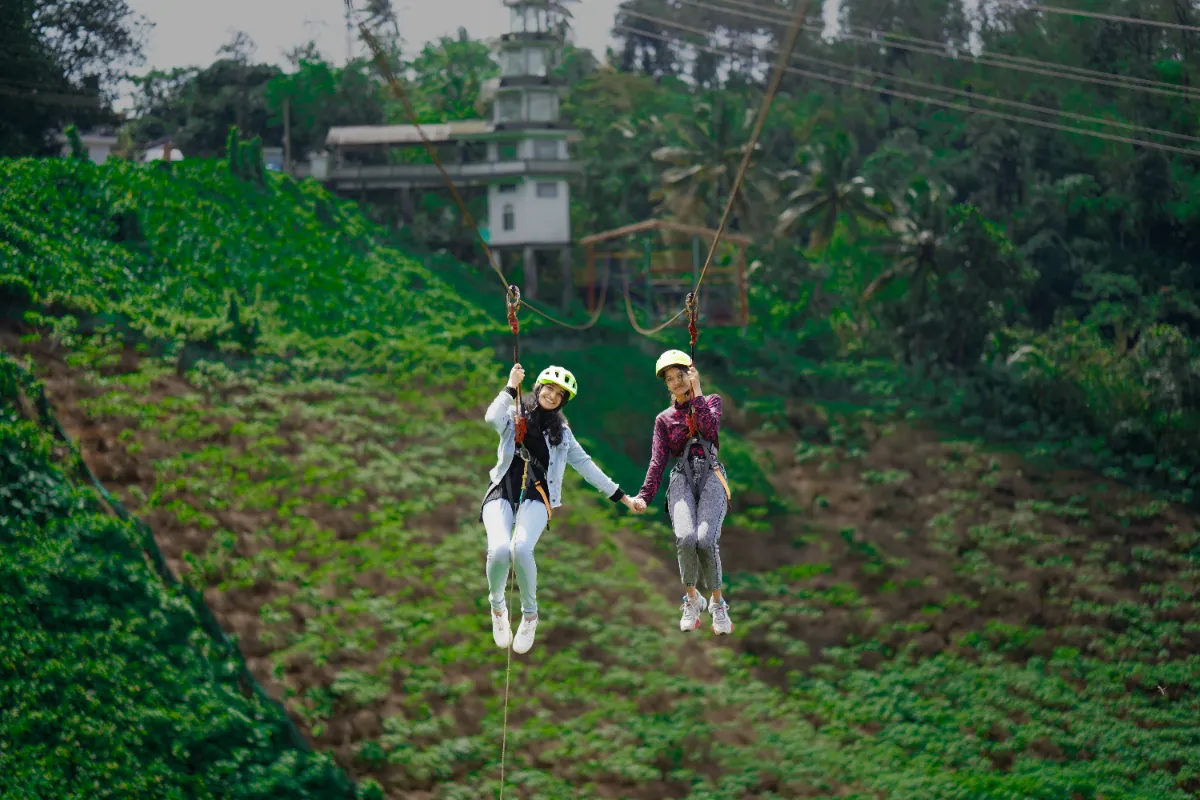
Long before Ziplining became an adventurous activity it was actually a way of survival in the ancient world. Originally, Ziplining was used for suspension bridge crossings to transport various goods from one valley to another or a means of bridging two valleys and connecting people from the two ends.
We invite you to discover the history of Zipline and this is where it comes from, how it evolved to the contemporary version, we know today and how is it used. Moreover, we will be discussing its relevance in the tourism sector especially Indian tourism and how Kerala has contributed to the adventure tourism.
Ziplining History: From Necessity to Innovation
Ancient Beginnings

The roots of Ziplining can be traced back to ancient times in regions such as India, China, and Japan. These civilizations employed primitive forms of Ziplining for:
Transporting goods across treacherous valleys and rivers.
Observing wildlife in dense forests without disturbing the ecosystem.
Replacing bridges in mountainous terrains, where constructing permanent structures was impractical.
These early Zipline were not only functional but also carried cultural and historical significance, symbolizing human ingenuity in overcoming natural obstacles.
To know about what is zipline. Read more…
The Birth of Modern Ziplining

The transition from necessity to recreation began with Donald Perry, a graduate student at the University of California. While conducting research in Costa Rica’s rainforests, Perry innovated the concept of a “zip course” to navigate the dense canopy.
His designs evolved into the modern Ziplining infrastructure we see today, revolutionizing adventure tourism and ecotourism. Perry’s vision transformed Zipline into a popular recreational activity that combines thrill with a unique way of experiencing nature.
Ziplining Today: A Blend of Utility and Adventure
Ziplining for Transportation
In several remote areas, Ziplining remains a practical solution for transportation:
Bolivia (Yungas): Farmers use Zipline to transport crops across rugged terrains.
Ladakh, India: Zipline simplify movement in mountainous regions.
Nepal and Latin America: Gravity-fed Zipline efficiently move cargo.
Australia: Historically used to deliver supplies to isolated communities.
Ziplining for Recreation
Modern Zipline are a staple in adventure tourism and recreational activities:
Adventure playgrounds for children offer safe, low-speed Zipline to introduce kids to the thrill.
Canopy tours combine ecotourism with adventure, especially in Costa Rica’s lush rainforests, where Ziplining originated as a recreational activity.
Adventure parks worldwide have popularized Zipline as thrilling activities offering breath-taking views.
Read article on topic is zipline adventourous?
Ziplining in India
India’s First Sea Zipline
The Ocean Fly Zipline at Aare Ware Beach in Ratnagiri, Maharashtra, offers a one-of-a-kind experience. Riders soar above the Arabian Sea and rugged coastline, making it a significant milestone for adventure tourism in India.
Ziplines in Kerala
Kerala has emerged as a hub for Ziplining enthusiasts. Key locations include:
Instrings Adventure Park: Situated at a stunning 6,000 ft. altitude.
Dareinn Adventure Park, Kottakunnu: Kerala’s first artificial adventure park with a Zipline.
Eagle’s Flight, Suryanelli: Features a 1.8-km-long Zipline offering awe-inspiring views of the landscape.
Other notable spots:
- Wonder Valley Adventure Park.
- Dam Adventure Park, Kalpetta.
- Upcoming river-cross Zipline in Trivandrum.
Importance of Ziplining in Kerala Tourism
Adventure Tourism
Ziplining has established Kerala as a destination for thrill-seekers, offering unique experiences amidst lush greenery and mountainous terrains.
Economic Impact
Adventure tourism boosts local businesses and creates employment opportunities, especially in the tourism and adventure sectors.
Ecotourism Appeal
Zipline promote sustainable tourism, encouraging conservation while providing unforgettable aerial views of Kerala’s natural landscapes.
Highlighting Kerala’s Natural Beauty
From the Western Ghats to the serene backwaters, Ziplining allows visitors to witness Kerala’s diverse terrain from an unparalleled vantage point.
Conclusion
Despite the fact that Ziplining has been in existence since ancient times as a means of escaping from danger this has been transmuted to adventure sport. It is relevant in terms of transport, as well as recreation and tourism, and often serves both a practical and an entertainment purpose.
If you want to get your heart racing and share nature’s beauty from a bird’s perspective then you must try out Zipline in Kerala. Begin your planning, design your Zipline adventure today, and explore the history of Zipline activity as you are conquering the heights.








